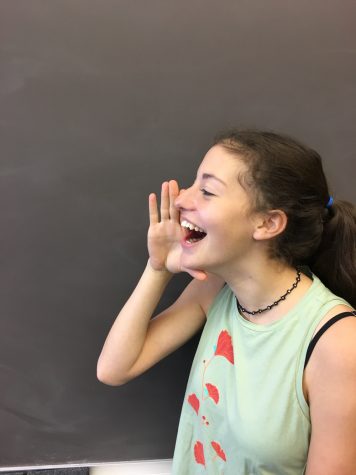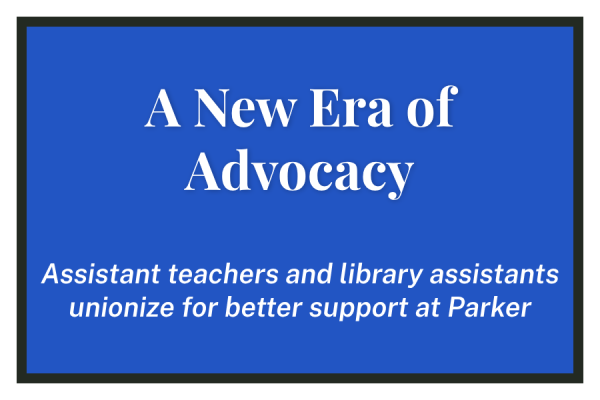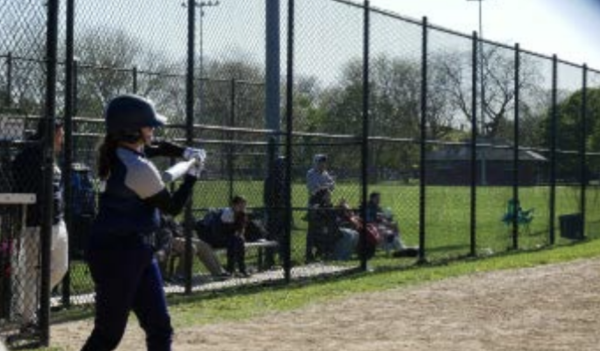“Little House on the Prairie”
A Story Worth Revisiting
A new book should be added to the 11th grade history curriculum – if the printer can keep up with demand.
The volume in question is “Pioneer Girl: The Annotated Autobiography,” the editor of which, Pamela Smith Hill, came to speak about the book in the Diane and David B Heller Auditorium on November 6, for one of the six Chicago Humanities Festival events taking place at Parker.
The South Dakota Historical Society printed the 472-page volume in 2014, never expecting that an annotated memoir on the early life and times of Laura Ingalls Wilder would sell out within a couple of weeks of its first printing. The book -based on an original manuscript by Wilder, the famous children’s author of “Little House On the Prairie”-is supplemented by Hill’s extensive notes using diaries, government records, and other primary sources that provide background information on the history that shaped Wilder’s life.
“Her mission with the Little House books was to bring her past to life for young readers,” Hill said. “And through her own stories, to illustrate the larger universal truths of fiction.”
Hill knew she had an interesting subject when she proposed the project to her literary agent. With the help of her daughter’s advice and vision, Wilder published nine books in the Little House series based on the content of Wilder’s own manuscript about her young life which she wrote in 1930 but never published. Her books, which included “Little House in the Big Woods” (1932), “Little House on the Prairie” (1935), “By the Shores of Silver Lake” (1939) and “The Long Winter” (1940), were so popular that they “created a lasting generation of readers that crossed generational and cultural boundaries,” Hill said.
Hill’s audience at Parker included around fifty or so die-hard Wilder fans, most of whom were middle-aged women holding copies of their annotated autobiographies, and periodically jotting down excited notes.
One fan in attendance was seventh grade English teacher Kate Tabor, who explained why she had a special connection to the books. “I grew up in Brookings, South Dakota, which I refer to as Laura Ingalls Wilder Ground Zero,” Tabor said, “because it’s about an hour to the east of the town in Minnesota where ‘Little House on the Prairie’ was set.”
According to Hill, Wilder wanted to make a connection to young readers to understand “the beginning of things,” Hill said. Wilder realized that she had seen and lived it all -all the phases of the frontier. First the frontiersmen, then the pioneers, then the farmers, and then the towns.
That message came across to members of the audience who had read Wilder’s books as children. “I still remember reading different parts of Laura Ingalls Wilder when I was nine years old,” audience member Priscella Brouillette said. “Re-reading it for my own children was a wonderful experience because they had the same powerful impact from her writing.”
This is a sentiment shared by many adults who read the stories as kids.
Upper School History teacher Jeanne Barr said, “For me, those books were a piece of my childhood about learning to love literature.” Tabor also loved Wilder’s books “just because she writes so vividly, and she makes the stories come so alive… She really gives you a sense of what it was like growing up as a kid in that time period.”
But Hill had another purpose in annotating Wilder’s original manuscript. She wanted readers to see that “Wilder’s books are not just about covered wagons, teams of horses moving west, and sun bonnets. They are also about a young woman coming of age in a sometimes complicated and difficult world.” Hill wanted the annotated version of “Pioneer Girl” to place Wilder’s stories in context.
As an example, Hill pointed out the chapter in “The Long Winter” when Almanzo, Wilder’s future husband, looks for a homestead. Hill said, “The idea of rugged individualism, the mythic family struggling to make ends meet in the American west, is an aspect most of us associate with the ‘Little House’ books.” But her closer look at the manuscript and other documents revealed that the pioneer experience was also about community, and relying on neighbors and friends for survival.
Hill gave examples of how life on the frontier was more morally complicated than Wilder sometimes portrayed it in her children’s books. Laura tells her sister about a “high-cheek-boned Indian riding on the white horse across the prairie into the sunset,” Hill said, but doesn’t acknowledge the reasons for why the Indians were retreating into the forests. “Westward expansion was essentially a genocide,” Barr said, “and involved the cultural, the human devastation of Native Americans.”
Brouillette feels similarly about the cultural implications in the West.
“Reading Laura Ingalls Wilder when you are child, you have a sense of the West and the possibilities,” Brouillette said. “But then coming to understand all of the challenges, the mistakes that were made, the fact that the free land wasn’t free, and that there was a big cost to it.”
Educators and audience members alike agree with the notion that these books should be thought of as a piece of curriculum. “If you had students reading those books now,” Barr said, “you would be absolutely obligated to explore the broader social context of the books, and to show the ways in which she is telling the history in a way that has an agenda.”







